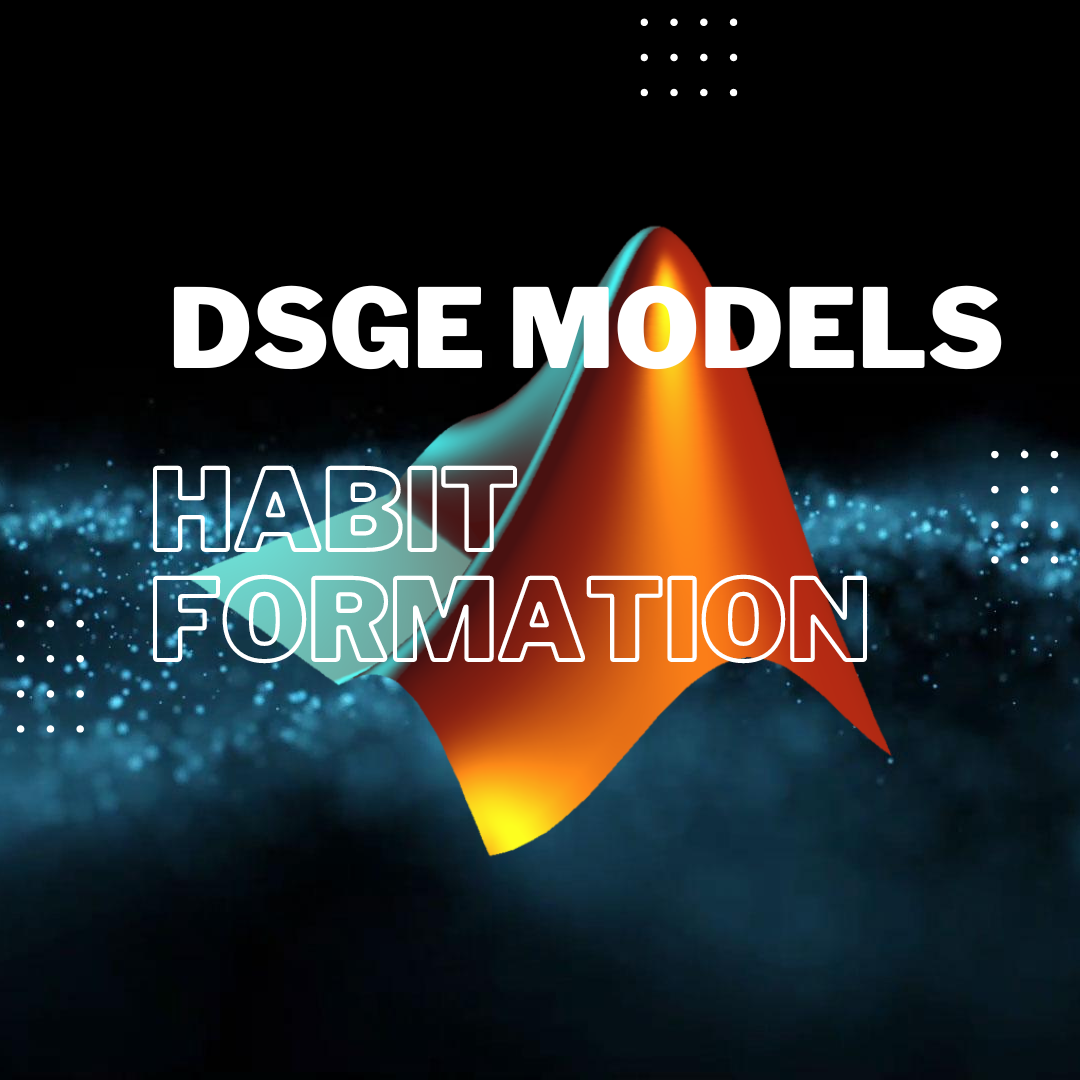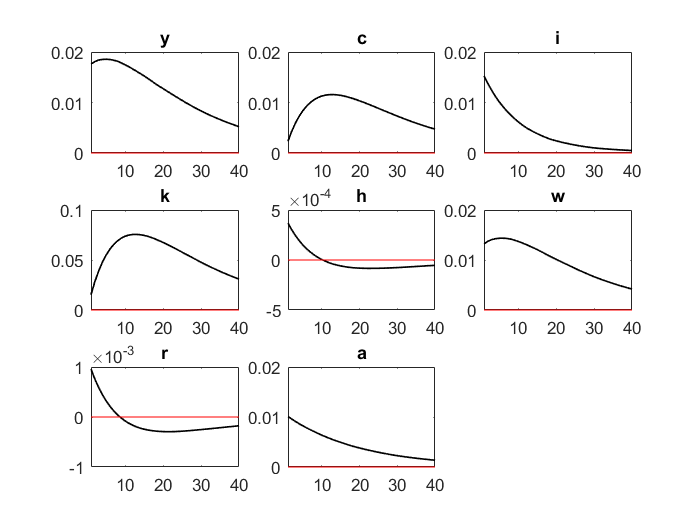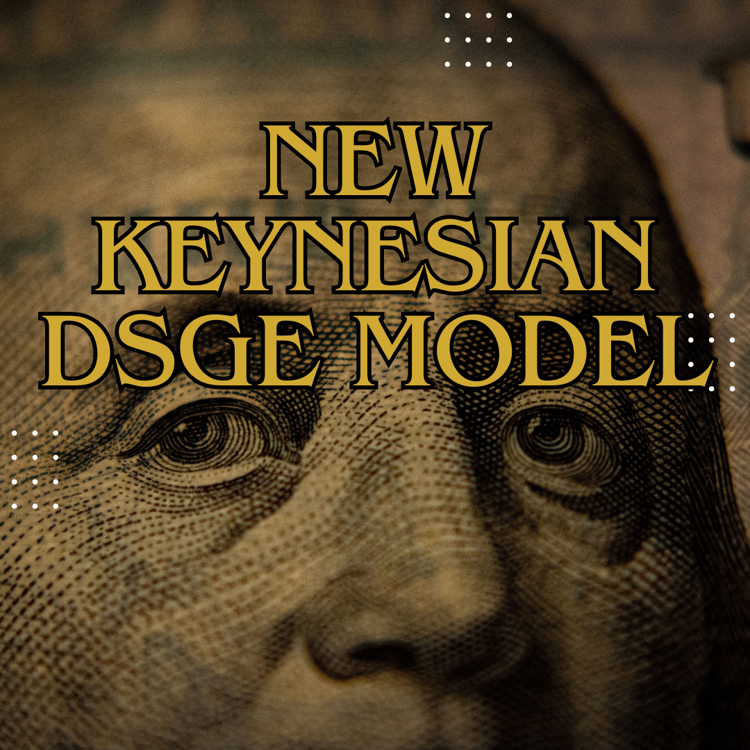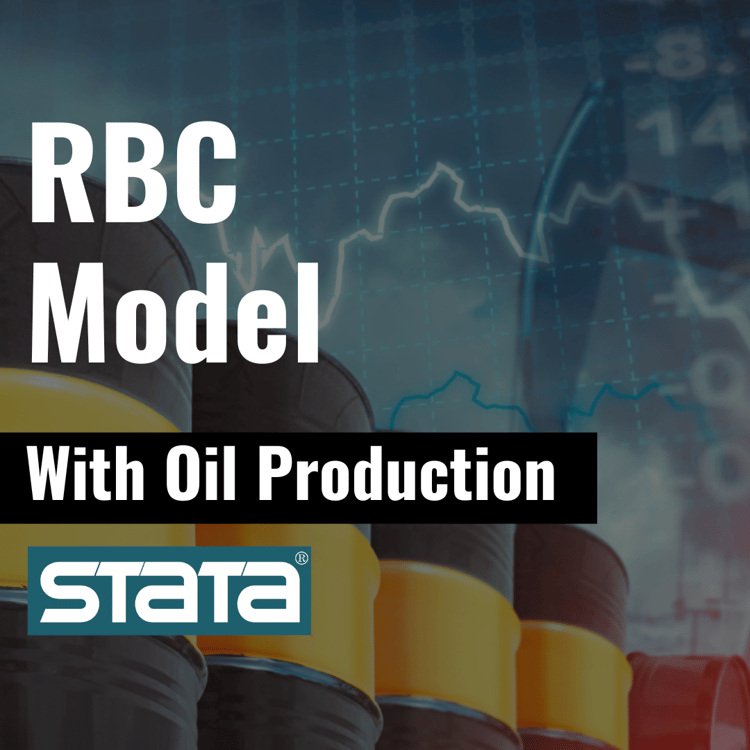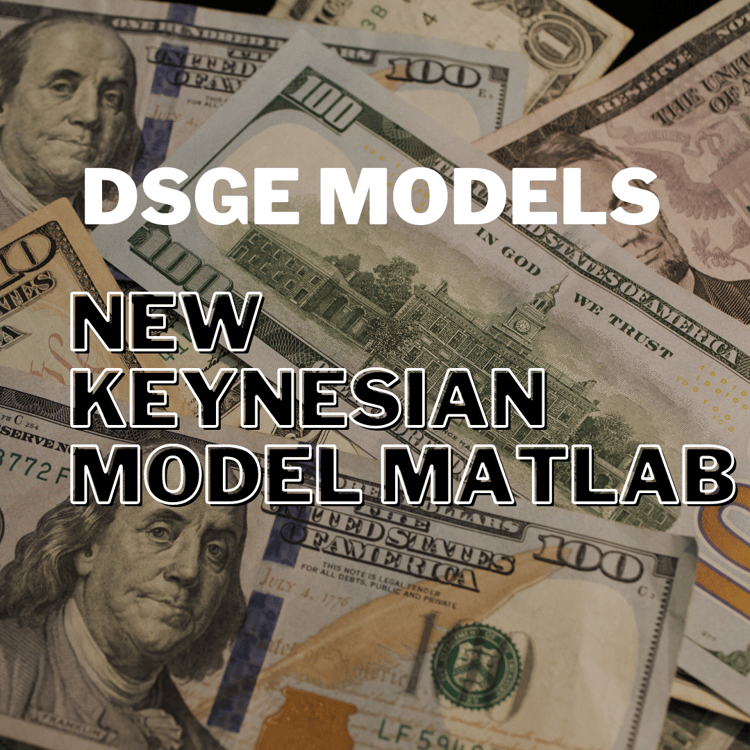In our simple RBC model, we made the assumption that the utility of the families is solely based on their present consumption and that the decision-making process of individuals is not influenced by their past consumption behavior. While this assumption may provide a useful simplification for some analyses, it is not always reflective of real-life situations.
In reality, consumers tend to develop consumption habits that are informed by their past experiences. What they consumed in the past often influences their current consumption decisions, and those decisions, in turn, impact future consumption. Consequently, the problem becomes much more nuanced and complex.
If we consider the impulse response functions in the basic RBC model, we can see that when there is a technology shock, consumption responds abruptly and reaches its peak immediately. However, in the presence of habit formations, consumption follows a different pattern. It reaches its peak gradually, taking some time to adjust to the shock, and following a hump-shaped curve.
Why does this happen? As we previously mentioned, consumers have habitual patterns of consumption that are difficult to change immediately after a shock. They need time to adjust and adapt to the new situation. This gradual shift in consumption patterns is a more realistic representation of how individuals react to changes in the economy.
In summary, incorporating habit formations into our RBC model provides a more realistic view of how consumption behavior evolves over time. It adds a layer of complexity that is necessary to capture the nuances of real-world economic dynamics.
Doesn't this sound more realistic?



